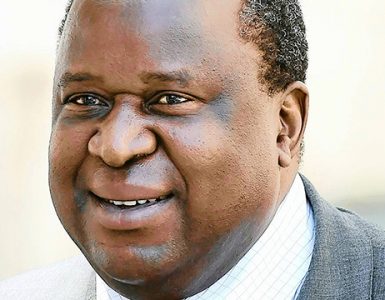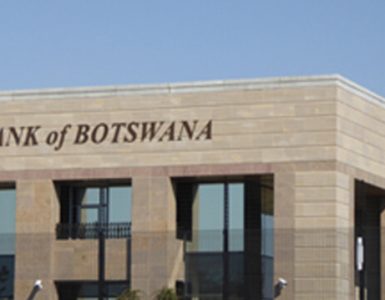Inflation has remained manageable between 2013 and 2015, peaking at 6.9% in 2014 and stabilising to 6.6% in 2015 according to the CABRI2. From this, we can deduce that exogenous global economic dynamics have not significantly impacted Kenya’s real GDP growth during this period, as much as in the rest of the world.
Kenya’s overall government debt has risen gradually, from a ratio of 41.7% in 2012 to 52.7% to GDP in 2015. Although this isn’t alarmingly high by global standards, the government must exercise caution in extending further debt, particularly foreign debt. The recent move by the US Federal Reserve to raise interest rates will have an impact on all nations indebted to the US: interest payments on the debt will rise. Therefore, instead of opting for international markets to raise capital, the Kenyan government should employ alternative tactics such as issuing government bonds – strictly on a needs basis of course.
On 30 January Kenya’s Monetary Policy Committee announced that inflation declined to 6.4% in December 2016 from 6.7% the previous month3. Like South Africa and several other countries, Kenya employs inflation targeting in order to maintain price stability. The MPC believes inflation will remain within the target band, below 7%, throughout 2017. The World Bank projected a 5.9% GDP growth rate in 2016, which is admirable, particularly with average global output more than 2% below this figure. GDP growth is predicted to rise gradually to 6% in 2017, mainly driven by a vibrant services sector, foreign investment and relatively lower fuel prices. The Kenyan Treasury is more positive about growth, estimating that real GDP growth will reach at least 6.2% in 2017. As optimistic as this may appear, it is achievable if inflationary pressures are contained by the central bank and energy prices remain relatively low. However, foreign investment would have to remain stable as well as infrastructure and investment expenditure by the government in key sectors.
The performance of Kenya’s economy throughout 2016 was robust, ably supported by macroeconomic stability, public investment in infrastructure, substantially lower energy prices and a recovery in the tourism sector. On the back of these factors, the MPC Market Perception Survey which was conducted in January 2017, showed that banks and non-bank private sector firms expect strong growth in 2017. Nonetheless, local economists expect prevailing dry weather conditions to have a negative impact on agricultural sector growth in 1Q2017 and possibly 2Q2017.
Kenya is growing its desirability as an attractive investment destination. In fact, foreign direct investment (FDI) increased from USD 1.05 billion in 2014 to USD 1.44 billion in 2015 according to UNCTAD4. This is a compelling indication that Kenya is increasingly attracting foreign capital, with many of these investors and institutions seeking investment opportunities in emerging markets. Part of the reason Kenya has been successful in obtaining foreign investment amid a globally uncertain economy can be attributed to its less restrictive policies (when contrasted with many other African countries) on foreign investment. Policies have ensured foreign investors guaranteed ownership as well as the right to remit dividends, royalties and capital to the home country. On the negative side, some economists predict that as much as 60-70% of the Kenyan economy is under the direct control of foreign investors and this has relegated most Kenyans to poverty, creating conditions that would lead to dependence on foreign aid. There are growing calls among locals for Kenyans to gain more control over the economy, through active participation and ownership of private enterprises. Nonetheless, over the past decade, the quality of life for Kenyan citizens has generally improved more so than many of its African counterparts.
Like South Africa, Kenya has a grand vision encompassing its future aspirations. Kenya’s Vision 2030 is separated into three key pillars: economic, social and political governance. The economic pillar endeavours to boost the country’s economy by investing in infrastructural programmes and expanding sectors such as: tourism, financial services, agriculture, trade and manufacturing to attain consistent 10% annual GDP growth. The social pillar seeks to provide better quality of life for Kenyans by granting access to various social services and employment programmes for the working age population. The political governance pillar focuses on introducing public sector reforms that will strengthen public accountability and the rule of law under the democratic state.
As a democracy guided by the principles of constitutionalism Kenya has the potential to become one of Africa’s great success stories. From its budding young population; a dynamic private sector encouraging entrepreneurship and innovation; as well as its geographical location and pivotal role within East Africa, Kenya can be a shining light to many other African countries. Kenya is the financial hub for central and east Africa, with the Nairobi Stock Exchange (NSE) ranked 4th in Africa in terms of market capitalisation. The looming elections in August this year present a different kind of challenge to the people of Kenya. It has become apparent that tensions are intensifying as opposition parties jostle for the position to lead the country in the upcoming 2017 August elections. The tensions were ignited by the ruling party differing on views with the opposition on matters pertaining to the amendment of the electoral system. In one report, it was highlighted that the biggest concern among Kenyan voters is the potential for election-related violence and intimidation tactics. The world will be watching with keen interest as this saga unfolds, to ascertain whether political order can be maintained after August.
1 African Development Group
2 Collaborative Africa Budget Reform Initiative
3 Kenyan Central Bank
4 United Nations Conference on Trade Development





























